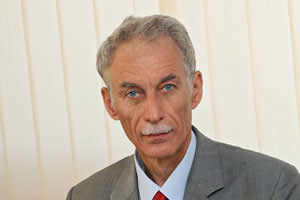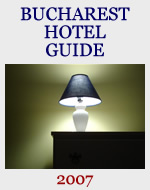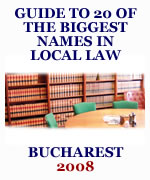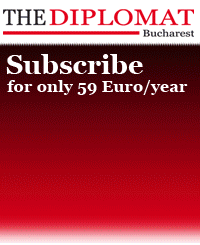Energy plans lack vision and pragmatism
Renewable sources are essential for a country looking to move on from coal dependence, argues Jean Constantinescu, president of the Romanian Institute for Energy Development Studies
 |
|
|||||||||||||
The Romanian Government’s energy strategy planned until 2020 lacks vision because it sees a 19th century country focused on conventional coal-based technology. The Government has not yet embraced the new European philosophy and is trying to imitate it in an inconsistent manner.
Coal is still considered a strategic resource of national importance, even though its quality in Romania is particularly low. Even the two traditional coal producers of Europe, the UK and Germany, have reconsidered their coal strategy. The UK has closed down mines and Germany is dramatically limiting its mining activity. Plus both countries have better quality coal than Romania. Quality is not the essential factor. The idea of coal itself is in question in the absence of a competitive clean-coal technology.
Romania has high potential in renewable energy to allow the country to comply with EU objectives to use more power from hydro, wind, solar, biomass and geothermal.
Geothermal energy is used in Oradea, west Romania. This technology was first considered in Romania in early 1970s, when pilot-installations well advanced for those times were built. Close to Bucharest there are also hot water resources which can be used to generate geothermal energy. But the locations for geothermal sources of energy are limited. Romania is not Iceland.
Heat pumps which use the Earth’s heat at small depths to warm households or small communities are widely used in the West and have also chances of success in Romania. This technology can be associated with renewables, even if it uses 15 per cent electricity to generate 100 per cent of energy needed.
Romania should set up the instruments and robust regulatory framework to build an energy environment that ensures honest competition.
This is the difference between the two Government incentive systems to encourage renewable energy, green certificates and feed-in tariffs. With feed-in tariffs, electricity suppliers must buy renewable electricity at above market rates to off-set the high costs of renewable power generation. Green certificates are tradable environmental commodities representing 1 MW/hour of electricity produced by green energy. The producer can sell this ‘certificate’ on a specific market in addition to its sale of electricity.
Feed-in tariffs were developed in monopolistic markets in west Europe following World War II. These are fixed tariffs regulated by the state and with the view to protecting investors well.
Later on, particularly in the mid-1990s, the EU imposed mechanisms of competition for all energy sources, and the de-monopolisation process began. It was decided that unconventional sources of energy providers should compete with each other, and the green certificates system emerged. Currently around seven EU member states use it.
I was president of the Romanian Energy Regulatory Authority (ANRE) when Romania decided to adopt the competitive format – green certificates. Public authorities should consider first protecting the consumer and only then the investor. The green certificates market does that.
Romania’s problem is that it has not yet finalised this system. Stopping in the midle is the biggest danger when a novelty is adopted. Then the critics say the system is wrong.
Firstly, Romania introduced a minimum price-threshold and maximum limit to green certificates which seemed to be small. The Government’s decision was not based on specific studies and did not offer a competitive advantage to Romania compared to a feed-in tariffs system. This discouraged investors.
Secondly, a quota system was introduced along with the green certificates. Every supplier has to purchase a percentage of green energy which they set at the beginning of a year.
If the supplier fails to fulfill this quota, it should receive a penalty from the regulatory authorities. But in Romania this quota system is not honoured. At the end of the year when the authorities realise the quota has not been fulfilled, they set a lower retrospective threshold to not upset the investors. In theory, the green certificate system should work but in practice, in Romania, it is not functioning as it should.
Thirdly, in this area Romania has a complex bureaucratic system which does not match EU members that use the feed-in tariffs system, where investors have a one-stop-shop to gain authorisations. This is not the case of Romania with its up to 90 permits to operate. The faster a company is established and a project is launched, the better a country develops.
The Diplomat/Wolf Theiss Experts Platform is a monthly essay written by an international or local expert on current topics of the day.
The opinions expressed herein are not reflective of any opinions of The Diplomat and Wolf Theiss as to agreement/disagreement or otherwise.

















